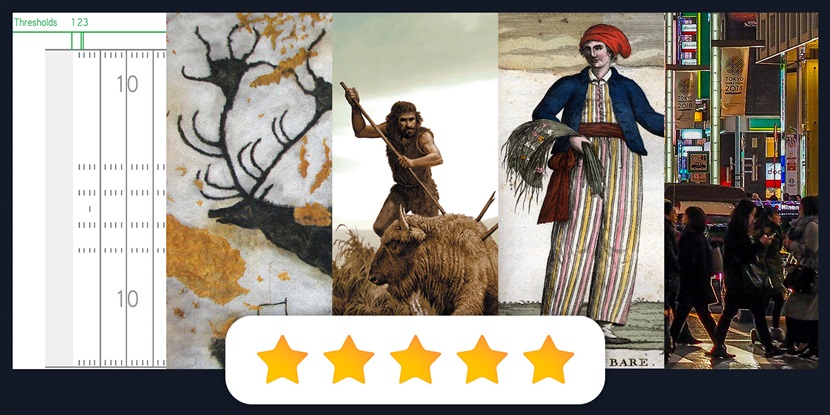By Megan Schultz, OER Project Teacher
In the spring, I feel renewed and reenergized and ready to start planning my next school year. I know, I know—I’m not done with this one yet, how could I possibly start thinking about the next year? But this is when I look back on my year and reflect on the learning activities I asked my students to complete. I like to assess my own practice in the same way we all assess student learning at the end of the year. What worked? What didn't? What do I need to do differently for the next year? This reflection also generates a “best-of” list to help kick-start my planning for next year. Here are the five assets that changed my teaching this year:
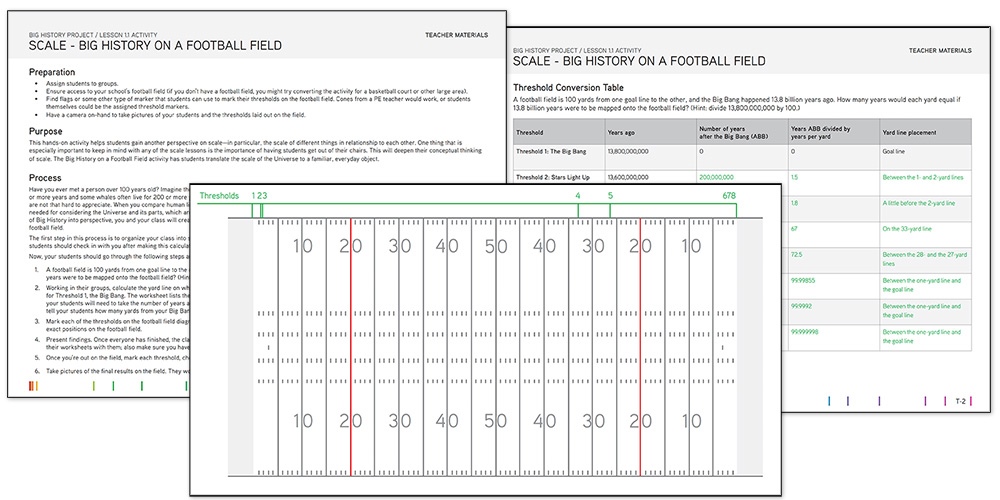
Big History on a Football Field: This is one of my favorite activities, and it pops up at the very beginning of the year. The concept of scale—looking at things from close up and far away—is incredibly important for students to grasp. The Big History Project (BHP) course begins with the Big Bang and takes students through various thresholds of increasing complexity until we reach the end of the school year and ponder the future. By having students plot each of the eight thresholds of the course onto a football field, students begin to understand the temporal scale of the Universe and why it is so important that we zoom in to see major events or details of human history, but also zoom out to see the connections between humans and the history of the Universe. This year I added a layer to the assignment by having students choose eight threshold moments from their own lives and plot them on a football field as well. This reinforced the skill of scale switching and also allowed me to learn more about my students early in the school year.
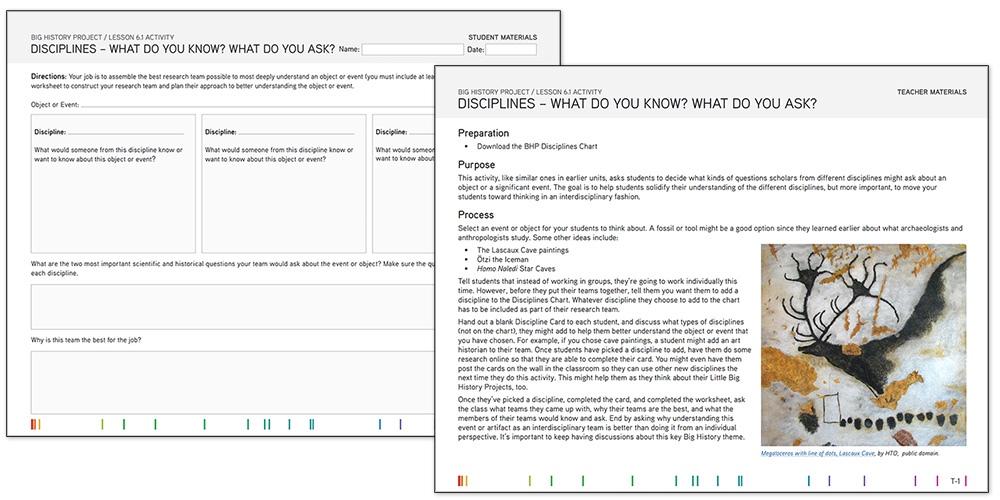
What Do You Know? What Do You Ask? Otzi the Iceman: Learning about different disciplines and how they work together to study history is one of the practice progressions of BHP. This practice progression is anchored by the recurring What Do You Know? What Do You Ask? activity. In Unit 6 I present my students with the case of Otzi the Iceman, which I supplement with additional materials about various theories for how Otzi died. Working in groups, my students were assigned a death theory and had to choose three the disciplines that would best be able to investigate Otzi’s death. This year I decided to have students create an investigative-reporting-style video to present their disciplines and theories to their classmates. While the projects were pretty good, I realized that they focused more on having fun with the video, and less on whether or not they had chosen proper disciplines. Based on this, I’ve determined that next year I need to provide more clarity on students’ need to explain why their chosen disciplines are the right ones.
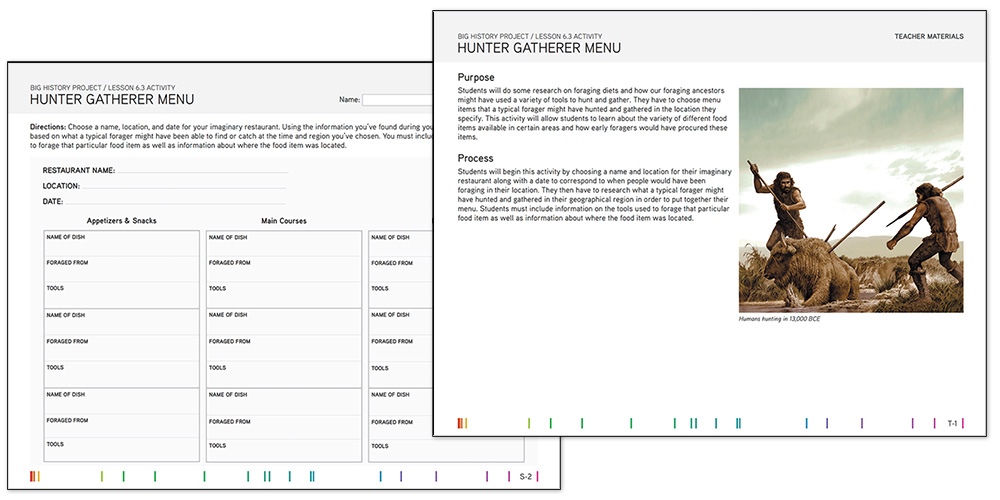
Hunter-Gatherer Menu: This activity has been a student favorite each year and I look forward to the menus that students create. Using modifications from another BHP teacher, I assign students certain regions of the world. They are given the tools available to the people of this region as well as the types of plants and animals that hunter-gatherers would have had available to them. This year I wanted to add to the assignment by not only having students work to create a menu but also write a paragraph that shows their understanding of foraging lifestyles. I like that this activity is fun and engaging for students but also allows me to assess their understanding of how early humans lived.
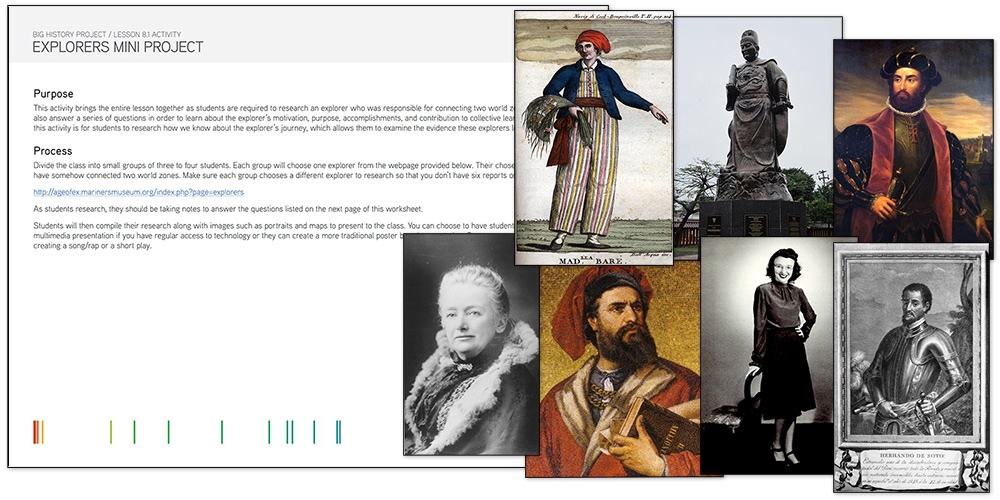
Explorer Mini Project: What better way for students to learn about the interconnection of our world zones than by studying the people who connected them? For this activity, students were assigned one explorer to research. Students then collaborated on a presentation with each student creating one slide on their explorer. I created a March Madness-style tournament bracket where they presented their explorer in a head-to-head tournament. After each presentation, the class chose which explorer moved on in the tournament. Students had a lot of fun with the tournament style of presenting, but I realized that they were not very focused on how well an explorer connected the world. They were voting based on their friends or maybe the name of the explorer (I’m looking at you Amerigo Vespucci). Next year, I’m going to make sure they have some set criteria for the explorers so they can thoughtfully choose a tournament winner.

Periodizing Human History: We begin this activity by first having students consider the periodization of Big History and the eight thresholds. Students try to re-periodize Big History using a different theme or concept. This year my students really struggled to do this and I wondered if I had not taught them enough about periodization. However, when I asked them to periodize human history using a concept or theme of their choosing, they did a really great job. As I think about the work we did this year, I’ve decided that in the future I’ll have them revisit their threshold moments from the Big History on a Football Field activity and see if they can practice periodizing their own lives first. This might help them learn how to “chunk” years into eras before they begin exploring a different concept or theme.
This kind of self-assessment allows me to make meaningful changes to my teaching, and doing it at the end of the year when the memories are fresh makes it that much easier. What about you? As you look back on your school year, what are some activities, articles, videos, or lessons that stand out? What worked and what would you do differently? Tell us about it in the OER Project Online Teacher Community!
About the author: Megan Schultz has been teaching for 11 years in Vineland, New Jersey. She teaches a full year of Big History Project to seventh-grade students and World History Project 1200 to eight-grade students in the Applied Math and Science Academy in Vineland.
 For full access to all OER Project resources AND our amazing teacher community,
For full access to all OER Project resources AND our amazing teacher community, 